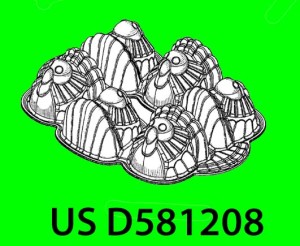To be new (also referred to as “novelty”), a design must differ from all previous product designs (known as the “prior art” — see below). You don’t have to come up with a new concept, only a new design.
To be novel,a design must be original, which means that it has to do more than simply imitate what already exists. For example, the design for a pan resembling a three-dimensional flock of turkeys was novel enough to receive a design patent.
On the other hand, a design that simply simulates or reduces a well-known object—for example, a paperweight replica of the Empire State Building—is not considered to be original. The design must be the result of “industry, effort, genius, or expense.” (Smith v. Whitman). It’s generally not considered original to depict something that occurs naturally, but this standard is interpreted loosely. For example, a design patent for a model of a human baby was invalidated (In re Smith), but the designers of a replica of female breasts on beads were granted a design patent and successfully enforced it against competitors (Superior Merchandise v. M.G.I. Wholesale).
What is Prior Art?
To achieve a design patent, your design must differ from the prior art which includes:
- any design used on a useful object in public use or on sale in the U.S. before the filing date of your design patent application (and with certain exceptions within one year prior to filling, for sales by the designer).
- anything that was publicly known or used by others in the U.S. before the date of filing
- anything that was made or built in the U.S. by another person before the date of filing
- any work that was the subject of a prior design patent, issued before the filing date of your design patent, or
- any work that was published before the filing date of your design patent.

